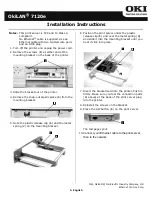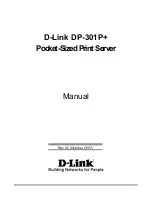
System BIOS
Intel® Server Board X38ML
Revision
1.3
Intel order number E15331-006
50
4.4
Loading BIOS Defaults
Different mechanisms exist for resetting the system configuration to the default values. When a
request to reset the system configuration is detected, the BIOS loads the default system
configuration values during the next POST. The request to reset the system to the defaults can
be sent the following ways:
A request to reset the system configuration can be generated by pressing <F9> from
within the BIOS Setup utility.
A reset system configuration request can be generated by moving the clear system
configuration jumper.
The following steps will load the BIOS defaults:
Power down the system (do not remove AC power).
Move the Clear CMOS jumper from pins 1-2 to pins 2-3.
Move the Clear CMOS jumper from pins 2-3 to pins 1-2.
Power up the system.
Refer to Section
7.8
for a definition of the jumper.
4.5
Multiple Boot Blocks
A single boot block was commonly used in previous generation BIOS implementations. The
boot block is located at the top block of the flash ROM, which could be protected by hardware,
such as through a jumper. If the BIOS image crashed, then the code within the boot block
remains intact and could be used to recover the system through peripherals such as a floppy,
CD-ROM, or USB drive.
Now the BIOS is more complicated and a single boot block faces space constraints. This
platform introduces multiple boot blocks as a way to remove the space constraints while
maintaining the boot blocks’ fault tolerant capability.
For this platform, there are two boot blocks and two backup boot blocks. Most of the time, the
backup boot blocks are an exact copy of the boot blocks. The only exception is when the BIOS
flash is updated by the flash update utility; the backup boot blocks are not updated. After that,
the boot blocks and the backup boot blocks are different.
The two backup boot blocks are locked during the normal boot path. During a flash update, the
backup boot blocks are protected and not updated because the BIOS image used to update the
flash does not contain the backup boot blocks. This ensures that if the flash update fails, an
intact copy of the boot blocks (or backup boot blocks) can be used to recover the system.
The backup boot blocks are updated on the first boot after a successful flash update. The flash
update utility sets a flag after it completes a BIOS update. During the first boot, the BIOS
detects the flag and copies the contents of the boot blocks to the backup boot blocks.
















































